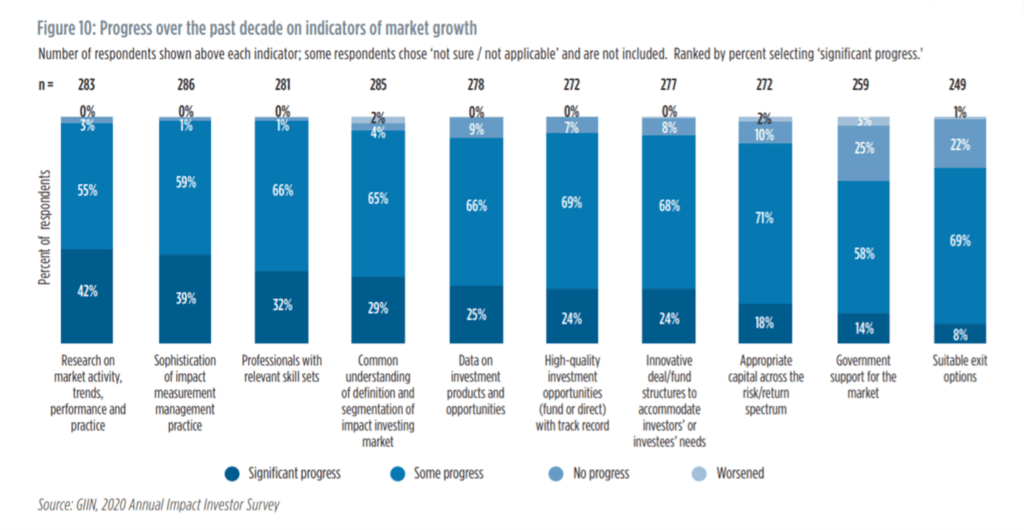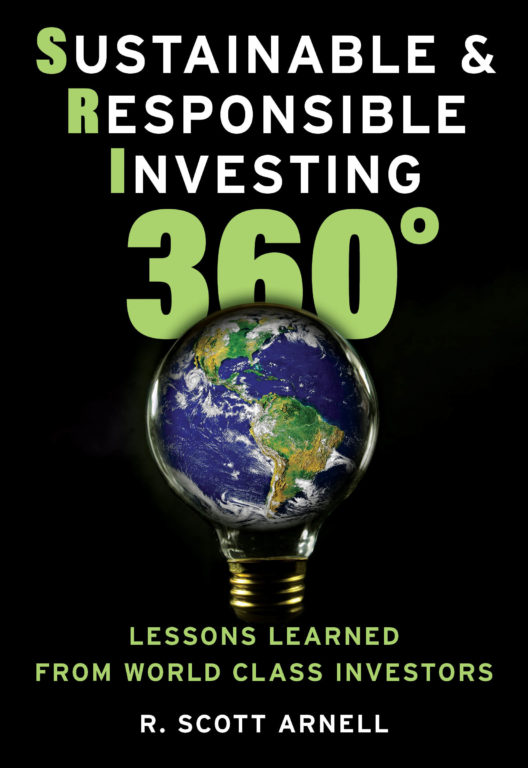
The global Impact Investment marketplace – which exceeds $715 billion in assets under management – is growing rapidly, and expanding to accommodate retail investors. So, what exactly is Impact Investing? According to the Global Impact Investing Network (GIIN), this investment approach has four primary characteristics:
1) Investors intend to have a social and/or environmental impact.
2) they use available data to drive investment design.
3) they manage investments toward the intended impact by establishing feedback loops and communication of performance, and
4) credible Impact Investors utilize shared industry terms, conventions, and indicators.
But until rather recently, impact Investing was primarily the exclusive domain of private capital like hedge funds, family offices and very high net worth individuals. That’s changing, and today nearly anyone can be an impact investor, even with modest amounts of money, through easily accessible public equity funds. That helps to democratize the marketplace for impact investing, so that even small investors can create outsized impact to help impact the world with positive, sustainably beneficial outcomes.

What vs. How: Impact vs. ESG
Within the world of Sustainable and Responsible Investing (SRI), there is lots of overlap in terms of purpose and intention to improve society, solve its problems, and protect our precious environmental resources. As a result, it can be confusing and challenging to understand the difference between ESG and Impact Investing. That’s especially true when slick marketers or less scrupulous advisors use the terms ESG and impact investing synonymously.
When I recently interviewed Eric Rice, Head of Impact Investing at BlackRock, he provided a clear and simple answer to differentiate between these two types of investment strategies: “ESG is about the how. Impact investing is about the what.” ESG is about how companies operate – how they treat society, the environment, and think about their governance in constructive ways. Impact Investing is about what products and services the company is making to create impact.
Exploring How Impact Investment is Unique
Companies that engage for impact may also follow the principles of ESG, but according to Rice, the important difference is that the majority of what they do – for example their products and services − makes a measurable positive impact. Think about a very conscientious and well-intentioned company, for example, that makes ice cream. They abide by ESG principles, treat their employees and local communities well, maintain a small carbon footprint, and ensure ethical and transparent governance.
Those are all laudable outcomes. But while ice cream can make you happy, it is not a product solving any of the world’s major problems. Companies that engage for impact, on the other hand, are primarily focused on delivering products and services that do solve those problems.
Examples include innovating technologies to provide greater access to clean water and fresh air, alternative energy, or safe and affordable housing. Impact companies could be creating more effective methods to feed the world, reduce deforestation, deliver healthcare resources, or provide education and occupational training.
“Another way that impact investing expresses itself is in direct shareholder activism,” Rice adds. He uses an approach he calls ‘Engagement 2.0’ to achieve real change. “Whereas ESG typically exerts its influence indirectly, by leveraging shareholder voting and collective action plus constructive dialog with company boards, impact investing usually takes a more direct approach.” That could include showing companies how to boost their impact, or providing them with access to funding, training and other resources to achieve those outcomes.

Impact Investment Due Diligence
As always, when it comes to underlying criteria and measurement, due diligence plays a key role in confirming the legitimacy and quality of an impact investment. A company’s products and services may, indeed, help solve significant problems in the world. But farther down the line in their production chain they may create problems in a way that undermines impact investment credibility.
Maybe their operations damage the environment or are responsible for the destruction of indigenous cultures or the displacement of communities in the localities where they operate. Perhaps they engage in unfair or unsafe labor practices. In these ways and others, a company may not live up to the promise of supporting an overall positive impact.
If the cost to remedy those negative impacts were calculated into their balance sheet, many seemingly prosperous companies would be much less profitable. Investors may be misled by promises of impact that are undercut or contradicted by the company’s own actions. For that reason, impact investors strive to consider all impact – for example by assessing the positive and negative effects of corporate activities against the 17 UN Sustainable Development Goals (SDG).
Avoiding Deceptive “Impact-Washing”
Impact investors need to weed-out investments in companies or funds that may be guilty of greenwashing or impact-washing that misrepresents their actual impact. As Rice emphasizes, unscrupulous players may engage in this kind of practice “because it is a big fat opportunity for them if they can re-label their strategies or tilt their strategies towards something that resembles [but does not equal] impact.” Indeed, he considers that to be the biggest challenge in the public equity Impact Investing space at the present time. He also points out that while there are thousands of private Impact Investment funds, last year he counted less than 20 like his which offer impact investing through public equities (Rice manages BlackRock’s Global Impact Fund).
Publicly traded funds can set a high bar for a company’s impact, as Rice advises, by following established industry guidelines that are created, published, and updated by organizations such as the Global Impact Investment Network and the IFC. The International Finance Corporation (IFC), for example, publishes its Operating Principles for Impact Management.
IFC Principles & the Impact Management Project
The Impact Principles are a framework for investors to use for the design and implementation of their impact management systems, ensuring that impact considerations are integrated throughout the investment life cycle. They may be implemented through different types of systems, each of which can be designed to fit their needs. These principles are scalable and relevant to all types of impact investors and sizes of investment portfolios, asset types, sectors, and geographies.
Asset owners and their advisors may use them to screen impact investment opportunities. Rice says that while he subscribes to IFC operating principles as a high level approach, “Then we use the Impact Management Project (IMP) as our standard, and there’s a clear set of criteria around what the impact is, who’s impacted, what the risks are, and so on.”
As the IMP describes on its website, the Impact Management Project (IMP) began in 2016 as a time-bound forum for building global consensus on how to measure, assess and report impacts on people and the natural environment. From 2018-2021, the IMP facilitated standard-setting organizations – the IMP Structured Network – to clarify the landscape of standards and guidance used by practitioners for their impact management practice. Any investor can access these resources to assist them in their understanding of Impact Investing standards and to help them with their due diligent research.
Earn Financial Returns While Making a Quantifiable Positive Impact
Today both professional and individual investors can participate in the Impact Investment market through publicly-traded equity funds, bond funds, ETFs, and a wide variety of alternative asset funds.
To learn more about impact investing with public equities, listen to my complete interview with Eric Rice here.
This article is based on a discussion of Impact Investing through publicly-traded equities in a chapter of my book, ‘Sustainable & Responsible Investing 360°: Lessons Learned From World Class Investors’. The book contains 27 interviews with leading, world-class SRI investors, and you can obtain your copy here.







